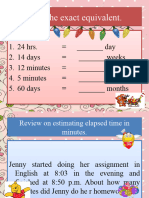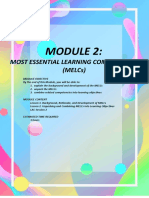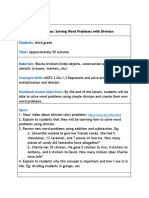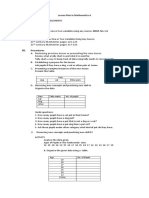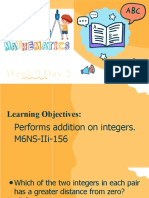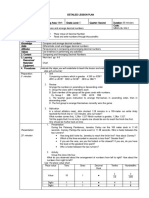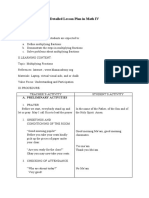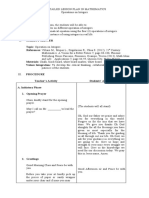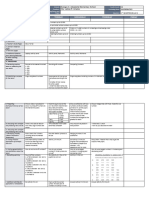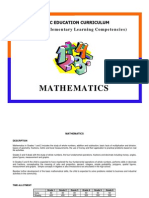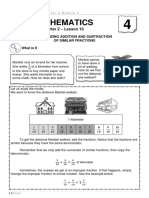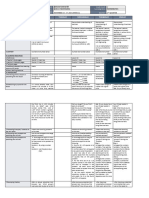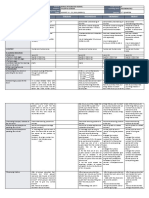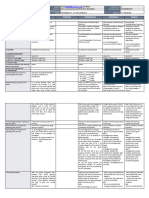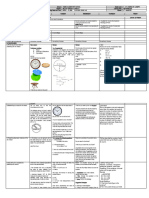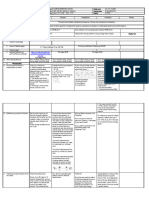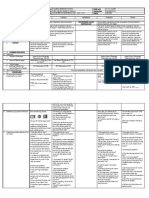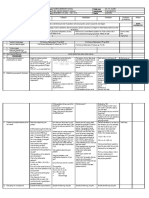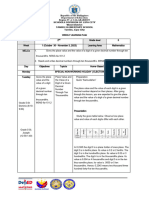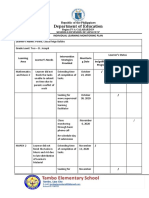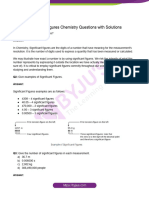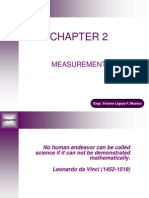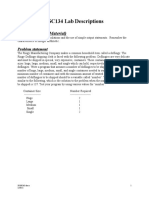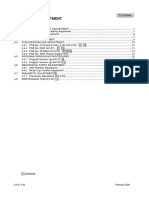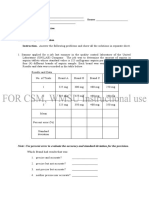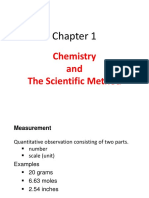GRADE 5 School TAMBO ELEMENTARY SCHOOL Grade Level 5 – ST. DOMINIC / ST.
JOSEPH
DAILY LESSON LOG Teacher MELODY GRACE M. CASALLA Learning Area MATHEMATICS
Teaching Dates and Time NOVEMBER 13 - 17, 2023 8:10 – 9:00 / 12:50 – 1:40 Quarter SECOND
MONDAY TUESDAY WEDNESDAY THURSDAY FRIDAY
I. OBJECTIVES
Demonstrate understanding of decimals
A. Content Standard
The learner is able to recognize and present decimals in various forms and context.
B. Performance Standard
Compares and arranges decimal numbers. Visualizes addition and subtraction Adds and subtracts decimal numbers through thousandths with regrouping.
C. Learning Competency/Objectives
(M5NS-IIb-104.2) of decimals. (M5NS-IIb-106.1)
Write the LC code for each.
(M5NS-IIb- 105)
II. CONTENT Number and Number sense Number and Number sense Number and Number sense Subtracting Decimals
III. LEARNING RESOURCES
A. References
1. Teacher’s Guide pages
2. Learner’s Materials pages 21st Century Mathletes p. 110-113 21st Century Mathletes p. 114-116 21st Century Mathletes p. 114-121
3. Textbook pages
4. Additional Materials from PLP Math 5 page 68-70 PLP Math 5 page 71-73 PLP Math 5 page 75-79
Learning Resource (LR)portal
B. Other Learning Resource Powerpoint, activity sheets,
IV. PROCEDURES
A. Reviewing previous lesson or Ask about rounding off decimals Drill Encircle the least number in Write <, >, or = on the blank to Ask about visualizes addition and Add the following: a. 0.5 + 0.33 +
presenting the new lesson through hundredths and thousandths each set. a.) 5478 5874 5487 5847 make the sentence true. subtraction of decimals 0.451 = b. 1.85 + 3.056 + 5.03 = c.
b.) 39476 39647 39674 39467 c.) 3.76 + 4.356 + 37.784 =
807586 870865 807568 870658 d.) a) 0.1114 ____0.2202
253800 235800 235008 253080 e.) b) 0.1090 ____0.1009
576238000 567000238 567238000
c) 0.999 _____ 0.1000
576000238
Complete the chart.
ROUND OFF TO THE NEAREST
HUNDREDTHS THOUSANDTHS
1.) 0.9146 2.) 1.0835 3.)
12.6288 4.) 9.5073 5.)
80.2745
B. Establishing a purpose for the lesson In a school athletics meet, John Today we are going to discuss about Have you been to a sari-sari store? Present items bought in a store with a Ask pupils to give words or terms
clocked 1.28 minutes in a 100-meter comparing and arranging decimals Have you try to compute the given price. which are related to subtraction.
run while Andy reached the finish in order. At the end of the lesson, amount of the things/item that you Ask: Do you always have your things
line in 1.32 minutes. Who ran faster? you should order the numbers from needed in school? Add the following: a. 0.5 + 0.33 +
bought? Do you find it easily to
Ask: What number comes first, 1.28 least-to-greatest and greatest-to- Ask: What should you do to the things 0.451 = b. 1.85 + 3.056 + 5.03 = c.
� or 1.32? Which number is greater, least compute? that you used in school? Do you keep 3.76 + 4.356 + 37.784 =
1.28 or 1,32? Tell the pupils that it is Ask: Do you count the change that it orderly and use as needed?
not only in sports one should be aim you receive after buying? Why? Emphasize the value of being orderly
to reach the finish line first. One
Let the pupils realize that it is and
should do his/her task on time
importance of accuracy in basic thrifty to the resources/ things that we
addition and subtraction in our daily have.
routines.
C. Presenting examples/Instances of the Present the following problems to Which of these decimals has the Present problems to the class Present problems to the class A piece of cloth measures 0.8972
new lesson the class least value? 2.4 2.04 1.9 2.09 To meters. Josie cut 0.3120 meters
compare decimals, start from the from it for her work in patching. How
highest place value. 2.4-----2.04 many meters of cloth were left?
1.9-----2.09 Ones digits are the Pupils answer the following
same. 1 is less than 2. Compare the questions:
tenths. Therefore 1.9 < 2.09. 0.4 is 1. What are we going to find out?
greater than .0 Therefore, 2.4 > 2.04 2. What process shall we use to get
If the number of decimal places are the correct answer?
not the same, zeros may be 3. Write the solution on the board.
annexed to the right of the decimal. 4. What similarity exists between
4.5 = 4.500 0.008 < 0.080 15.04 < subtracting whole numbers and
15.4 6.4> 6.004 To order decimals, subtracting decimals?
find the least and the greatest
decimal, then compare the other
given decimals.
D. Discussing new concepts and How do we compare and arrange How do we compare and arrange How do we visualize addition and How do we add or subtract decimals? How do we subtract decimals?
practicing new skills # 1 decimal numbers? decimal numbers? subtraction of decimals?
E. Discussing new concepts and A. Encourage the pupils to work in 1.Encircle the greater decimal. A. Encourage pupils to use grid Ask the pupils to work in groups in Mother had 8.5 kg if flour. She used
practicing new skills # 2 pairs. Give them time to solve for the a.) 5.005 5.05 lines to solve the problem. Instruct solving the problem. 2.3 kg in cooking pastries. How
answer to the problem by illustration. b.) 24.105 24.15 the pupils to do the following: Step 1: many kg of flour were left? To solve
Solution 1: By using a number line. c.) 6.059 6.0059 1. Count a 10 x 10 squares on a Arranged the numbers vertically. the problem, subtract 2.4 from 8.5.
d.) 72.4 7.24 graphing paper. Then add the numbers from 5.715 km Study the solution and steps given
Solution 2: Use the place value e.) 30.72 30.702 2. Cut four sets of 10 x 10 squares right to left. Put the decimal point on below: Step 1 – Write the decimal
chart. to be used to solve the problem. its corresponding place. numbers correctly. Align the decimal
3. Color two sets of 10 x 10 Step 2: points.
squares based from the number of Arranged the numbers vertically.
squares tiles on the given problem. Subtract the numbers from 1.814 km Step 2 – Subtract the decimals,
4. For the third set of 10 x 10 right to left. Put the decimal point on starting from the rightmost digits.
squares colored it with both red and its corresponding place.
Step 3 – Include decimal points in
blue as indicated in the problem.
the answer. 2.With Regrouping
Let them count the total number of
Rommel’s kite string measures
square which are both red and
42.25 m. While flying his kite, it got
blue.
snagged and he lost 19.75 m. How
5. Let the pupils colored the
much string was left? To find the
� remaining numbers of squares with answer to the problem, subtract
green. Do it on the fourth set of 10 19.75 from 42.25.
x 10 squares.
Study the solution below: 1. Subtract
0.05 from 0.05 2. Subtract the
tenths. Can we subtract 0.7 from
0.2? So we regroup from the next
digit which is 2. 8.5 -2.35 6.235
F. Developing mastery After all groups presented their Encircle the lesser decimal. After all groups presented their After the group presented and 2.Arrange the decimals in columns
(leads to Formative Assessment 3) answers, ask: Which group/s a.) 2.03 2.30 answers, ask: How did you find the checked their work, call on the then subtract. a. 0.783 – 0.452 = b.
was/were able to give all correct b.) 56.2 5.62 activity? How did you solve the total leader to 0.5 – 0.05 = c. 10.09 – 6.522 = d.
32.105 – 4.653 = e. 5.18 – 0.163 =
answers? Which group/s missed an c.) 6.075 6.0075 number of red and blue square relate what they have done to solve
answer? Which group/s was/were d.) 5.385 5.0385 tiles? How about the green tiles? the problem.
not able to give any correct answer? e.) 100.01 100.001 How did you do it? Ask:
Ask: How do we compare Ask:
decimals? How do we order What strategy was used in How do we add decimals through
decimals? solving the problem? thousandths with or without
Does it help you to clearly see the regrouping?
addition and subtraction of Did you move the decimal point of
decimals through visualization? the sum of decimals?
How do you subtract decimals
through thousandths with or without
regrouping?
Did you move the decimal point of
the difference of decimals?
G. Finding practical application of A. Read and solve the following. Write >, < or =to compare the A. Read, analyze and solve the A. Read, analyze and solve. Arrange the decimals in columns
concepts and skills in daily living decimals. a.) 0.65 0.650 b.) 8.58 following. then subtract.
1. Jeremiah and Catherine are both 8.508 c.) 63.75 6.375 d.) 200.02 1. Alex traveled 41.3 kilometers on
honor pupils in their school. For the 200.200 e.) 5.7004 5.700400 1. During a vacation, Ben’s Monday and 53.75 kilometers on a. 2.03 – 1.176 =
first quarter, Jeremiah’s average is records showed gasoline Tuesday. How many kilometers did
93.1 while Catherine’s average is b. 6.07 – 2.819 =
purchases of 19.75 gallons, 15.4 he travel in two days?
93.095. Who topped the first
quarter? c. 5.621 –3.78 =
gallons, 13.85 gallons and 21.06 2. In a midnight sale, a radio cassette
gallons. How many gallons of player was sold at P 1 449.95. If it’s
d. 7.132–5.89 =
gasoline did he buy? regular price was
e. 8.13 – 5.247 =
2. The perimeter of a triangle is P 1 950.50, how much less was the
equal to the sum of the length of its sale price?
sides. Find the perimeter of a
triangle whose sides are 8.75 cm,
� 9.6 cm and 10.375 cm
H. Making generalizations and In comparing and ordering decimals: How do you arrange decimals in In adding/subtracting decimals follow What important points did you learn
abstractions about the lesson ascending order? these steps: from today’s lesson? What should
Line up decimals. Write equivalent How do you arrange decimals in In adding/subtracting decimals: you remember when the minuend
decimals if necessary. descending order? Arrange the numbers in column. has less decimal places than the
Begin at the left. Compare to find Write the decimals in a Align the decimal points. Use 0 as subtrahend? In adding/subtracting
column, aligning the decimal placeholder if needed.
the first place where the digits are decimals follow these steps:
points. Use 0 as place holder Add/subtract as you would
different. when needed. add/subtract whole numbers from
Compare the digits. Add/subtract as you would Arrange the numbers in column.
right to left.
Order the decimals if there are 3 add/subtract whole numbers. Align the decimal points. Use 0 as
Place a decimal point in the sum/
Regroup if necessary placeholder if needed.
or more given decimals from least difference. Align this with the other
Place the decimal point in the Add/subtract as you would
.to greatest or from greatest to decimal points.
result aligned with the other add/subtract whole numbers from
least. right to left.
decimal points.
Place a decimal point in the sum/
difference. Align this with the other
decimal points.
I. Evaluating learning A. Order the given decimals from Arrange each decimal in A. Complete the illustration by A . Perform the indicated
greatest to least. ascending order (least to greatest). shading or coloring them correctly operation.
1. 0.5 0.49 0.53 0.51 0.503 a.) 0.140 0.036 0.241 0.053 0.229 showing the given addition or
1. 16.00
_____ _____ _____ _____ _____ subtraction statements. Take note
B. Compare these decimals by
b.) 1.95 3.04 0.98 1.69 2.34 that each squares represents 15.47
writing <, > or = in the blank.
_____ _____ _____ _____ _____ 0.001.
1. 0.162 _____ 0.106 c.) 6.405 6.7 6.189 6.413 6.722
2. 0.036 _____ 0.031 _____ _____ _____ _____ _____
3. 0.4 _____ 0.40
Arrange each decimal in descending
order (greatest to least).
d.) 0.008 0.8 0.008 8 0.0008
_____ _____ _____ _____ _____
e.) 4.044.4 4.404 4.44 4.004
_____ _____ _____ _____ _____
J. Additional activities for application or A. Compare these decimals by Write TRUE or FALSEon the blank A. Draw an illustration that will A. Add or subtract. Match with the Solve for n. a. 84.35 – n = 29.88 b.
remediation writing <, > or = in the blank. before each number. represent the following. correct answer. 100.56 + n = 139.244 c. n – 78.733
1. 0. 008 _____ 0.0009 _______1.) 0.057 = 0.87 _______2.) 1. 0.085 – 0.076 1. 0.257 + 0.212 a. 0.525 = 142.76 d. n + 35.47 = 69.58 e.
0.12 = 0.1200 _______3.) 0.3245 < 47.3 + 39.5 + n= 100 35.4 -18.752
2. 0.19321 _____ 0.19231 2. 0.063 + 0.009 2. 0.928 – 0.403 b. 0.766
0.56 _______4.) 0.7636 < 1.002 0.936 -0.642 0.762 -0.36 76.05 -
3. 0.098 – 0.075 3. 0.754 – 0.22 c. 0.469 28.667 90.552
_______5.) 4.200 > 2.400
4. 0.025 + 0.018 4. 0.316 + 0.45 d. 0.987
5. 1.041 + 0. 043 5. 0.863 + 0.124 e. 0.534
� V. REMARKS
VI. REFLECTION
A. No. of learners who earned 80% in
the evaluation
B. No. of learners who require additional
activities for remediation who scored
below 80%
C. Did the remedial lessons work? No. of
learners who have caught up with the
lesson
D. No. of learners who continue to
require remediation
E. Which of my teaching strategies
worked well? Why did this work?
F. What difficulties did I encounter which
my principal or supervisor can help
me solve?
G. What innovation or localized materials
did I use/discover which I wish to
share with other teachers?


